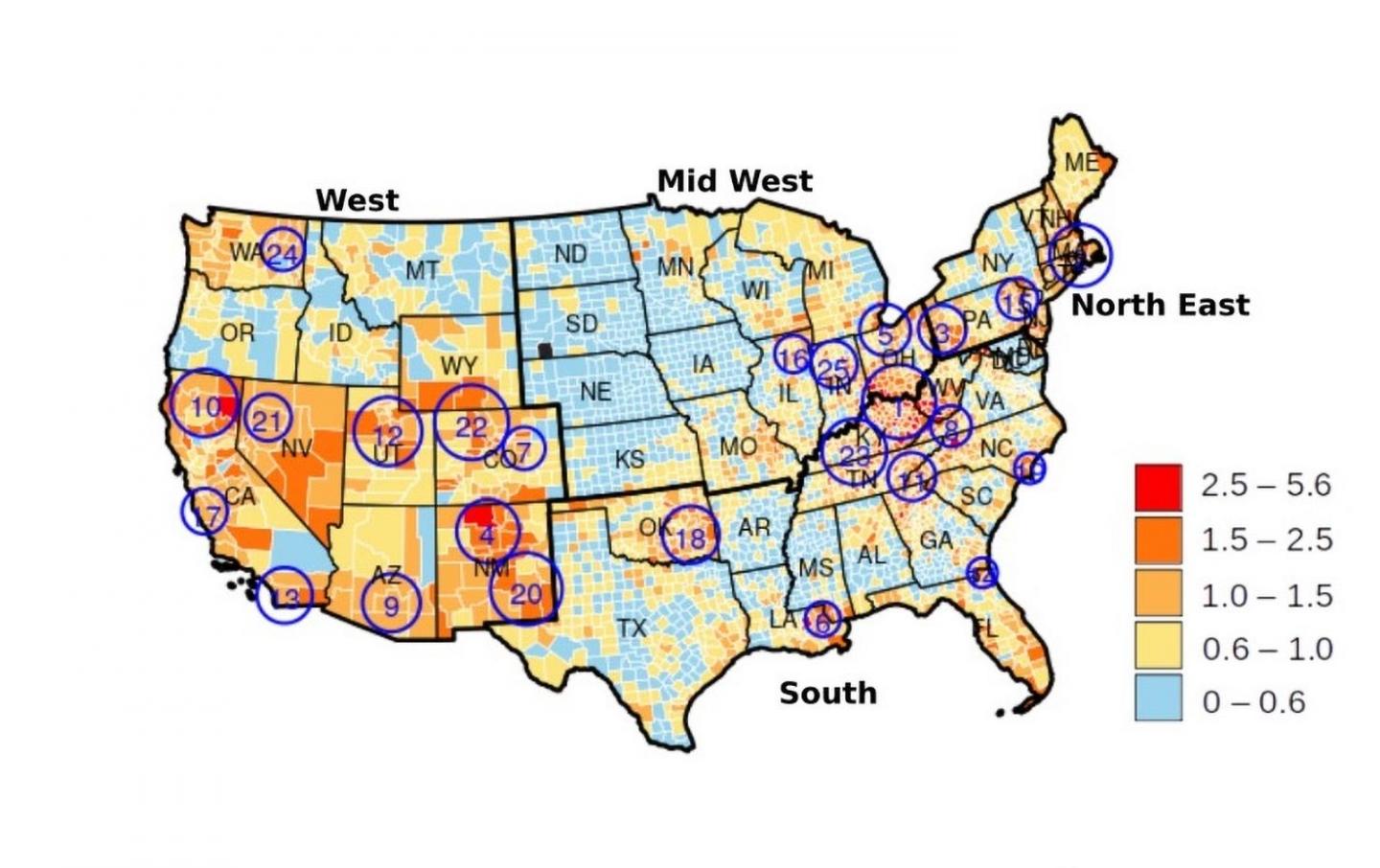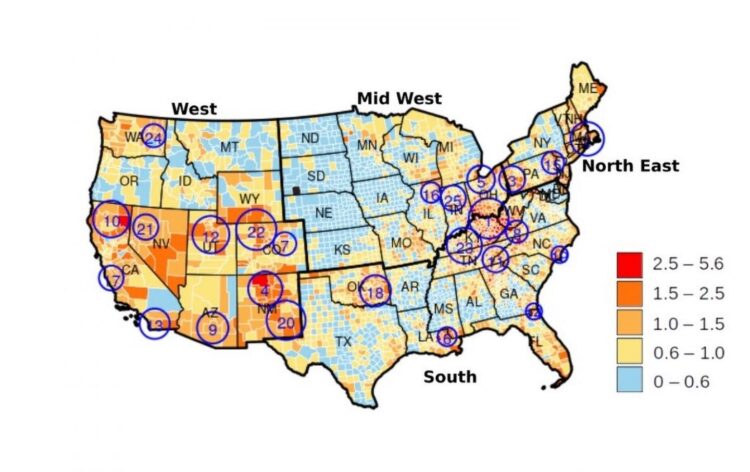National study identifies at-risk populations and 25 geographic hot spots for epidemic

Credit: UC
The opioid epidemic is taking a deadly toll on people in disproportionate clusters from Cape Cod to San Diego, according to a new study by the University of Cincinnati.
Fatal opiate overdoses are most prevalent among six states: Ohio, Pennsylvania, Kentucky, West Virginia, Indiana and Tennessee. But researchers identified 25 hot spots of fatal opioid overdoses nationwide using data from the Centers for Disease Control and Prevention.
The study demonstrates how both widespread and localized the problem of substance use disorders can be, UC assistant professor and co-author Diego Cuadros said.
Cuadros is director of UC’s Health Geography and Disease Modeling Laboratory, which applies geographical information, perspectives and methods to the study of health, disease and health care. As an epidemiologist, he studies the impacts of diseases such as malaria, HIV and COVID-19.
“Not everyone is similarly at risk,” Cuadros said. “We wanted to identify characteristics that put people at higher risk of a fatal overdose.”
Health interventions for opiates have focused largely on treatments such as the distribution of naloxone and other lifesaving remedies. But Cuadros said prevention could be effective if vulnerable populations can be identified. To that end, researchers found that white males ages 25 to 29 were most at risk of fatal opioid overdose followed by white males ages 30 to 34. The study also identified an increasing risk to black males ages 30 to 34.
The study also found a correlation between fatal overdoses and mental and physical distress using surveys of physically and mentally unhealthy days. Mental distress increases the relative risk of dying from a drug overdose by as much as 39%.
“We saw a strong association with mental health and substance abuse disorders, particularly opiates,” Cuadros said. “What’s happening now is we’re more than a year into a pandemic. Mental health has deteriorated for the entire population, which means we’ll see a surge in opiate overdoses.”
Researchers are trying to understand why men are more likely than women to suffer a fatal overdose and what it is about the period of life between age 30 and 45 that makes people more susceptible to the epidemic.
“Maybe you have more responsibilities, financial responsibilities or stress at that time. Maybe there are physiological changes or changes in our brain that we don’t know yet,” Cuadros said.
“This is a complex epidemic. For HIV we have one virus or agent. Same with malaria. Same with COVID-19. It’s a virus,” Cuadros said. “But with opioids, we have several agents. At the beginning of the epidemic it was heroin. By 2010 it switched to prescription opiates.”
Now states are seeing more overdoses from synthetic opioids such as fentanyl.
The study also tracked the migration of overdoses between 2005 and 2017 from Southwest states to the Northeast. Many of the clusters UC identified in the Southwest and Northeast had comparatively higher levels of physical and mental distress.
Co-author Neil MacKinnon, former dean of UC’s James L. Winkle College of Pharmacy, said the analysis could help health policymakers and clinicians by identifying individual and community-level factors associated with an increased risk of death due to substance use disorder. He is provost now at Augusta University, Georgia.
“We hope the risk factors we identified in this analysis will be used by agencies like RecoveryOhio to plan proactive strategies and allocate resources to address this epidemic,” MacKinnon said.
Previously, UC researchers identified 12 regions in Ohio that had disproportionately high rates of fatal overdoses from opioids.
“We started in Ohio. We know that in this state we’re suffering one of the highest burdens of the problem,” Cuadros said.
Likewise, he said it would be worthwhile to study populations in the United States where opioids are not exacting a horrible toll on families to understand the problem.
“Sometimes we focus too much on where the problem is focused. It’s useful to look at the areas where the problem is not as pressing,” Cuadros said.
###
Media Contact
Michael Miller
[email protected]
Original Source
https:/
Related Journal Article
http://dx.





